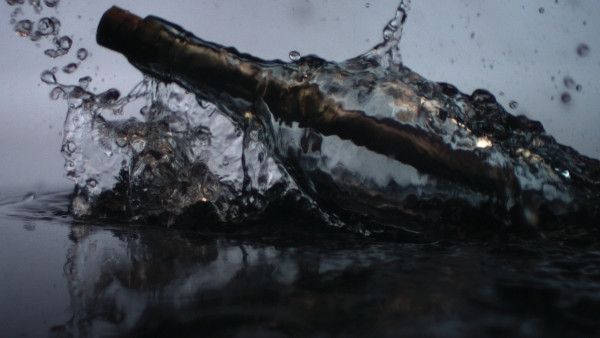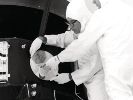Eye For Film >> Movies >> The Farthest (2017) Film Review
The Farthest
Reviewed by: Amber Wilkinson

Almost 50 years after Buzz Aldrin made his "small step for man" on the Moon, our fascination with what lies beyond our own planet lies undiminished, even if the funding levels are feeling the squeeze. The subject has proved a fruitful source of documentary material in the past, including In The Shadow Of The Moon, The Last Man On The Moon and For All Mankind. Now, editor and director Emer Reynold's documentary The Farthest arrives as a worthy companion.
Reynolds zeroes in on the Voyager programme - described here as "the science project of the 20th Century" - which saw Nixon agree to creating two Voyager craft in 1973 to take advantage of a rare window of opportunity regarding the alignment of planets to make a "grand tour" of the outer reaches of the solar system. Despite Nixon's departure from office rather sooner than expected, the programme continued, although initially in a scaled back form, and the teams assembled the craft which they hoped would finally give them close views of Jupiter, Saturn and, potentially, Uranus and Neptune.

There is plenty of science included here, provided by an entertaining group of experts with, notably, an excellent balance of male and female voices. Often the nature of early missions being dominated by male astronauts means that women fade into the background of these documentaries but here we get a much better sense of the gender balance on the ground. The scientists don't just confine themselves to the specifics of the Voyager mission itself, broadening out the discussion to offer impressive amounts of context in terms of the huge amount of "room" there is in space, offering analogies to make grasping the distances accessible to non-maths brains and touching on the possibilities of multiverses and alien intelligence. This isn't a case of dumbing down, but of people who adore their subject enjoying the opportunity to explain it to a wide audience.
The director's editing background shows in her tight grip of the material (aided by strong work from Tony Cranstoun). The science observations are structured according to the fly pasts of the Voyager craft and interwoven with the more 'artistic' story of the Golden Record which both carry. This specially made LP is intended as a message to any alien who might stumble upon it and contains a variety of world music, plus greetings in 55 languages and 100 photographs - in a reminder of Seventies' mores, it is revealed that the only photo that was banned from inclusion was a full frontal shot of a naked man and naked pregnant woman.
Much of the content of this film seems incredible now, not least the fact that the Golden Record was put together in around six weeks or the revelation that a simple key fob in your pocket these days holds more memory than vessels' onboard computers. It's also noticeable how much less 'managed' things such as press conferences - or even the assembling of material for those records - was back then than it would be now. People were chosen to give a greeting simply because they were there at the time and could speak an additional language and the idea that each could say whatever they wanted in their brief message would be unlikely to make it past the idea stage in today's world.
The documentary's greatest strength lies in the way Reynolds allows the scientific to mix with the philosophical and the deeply emotional. Many of those offering their views get choked up as they recall key parts of the mission but are also overjoyed that Voyager has now managed to leave the Solar System and will continue its journey even after it is effectively out of our 'earshot'. The director also has a away of encouraging us to open our minds to ideas and new ways of seeing - not least in the way she initially includes shots looking up through various environments at the sky. To the scientists involved, the Voyager craft are a part of the family - and by the end of this film you'll feel that strong connection to, as the "little engines that could" carry a little part of us, like a message in a bottle, into an unknown future and to unknown shores.
Reviewed on: 30 Aug 2017If you like this, try:
For All MankindHidden Figures
In The Shadow Of The Moon
The Last Man On The Moon

















